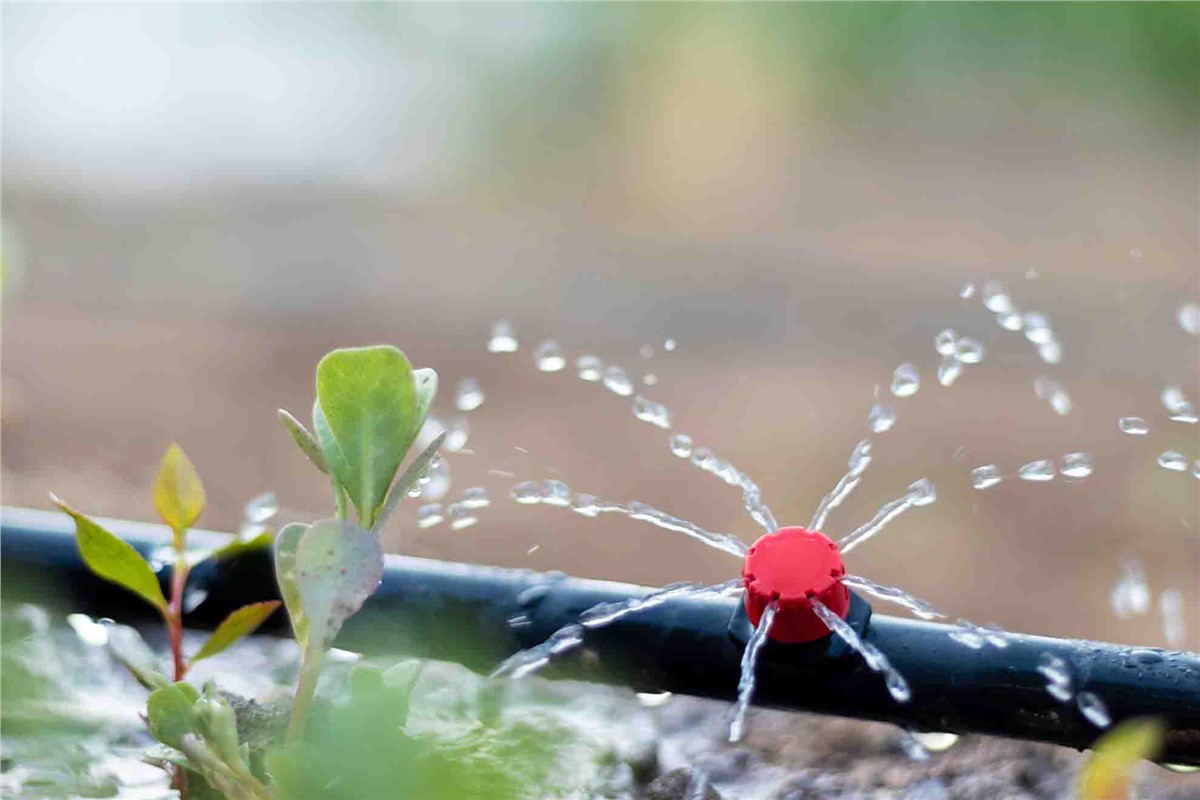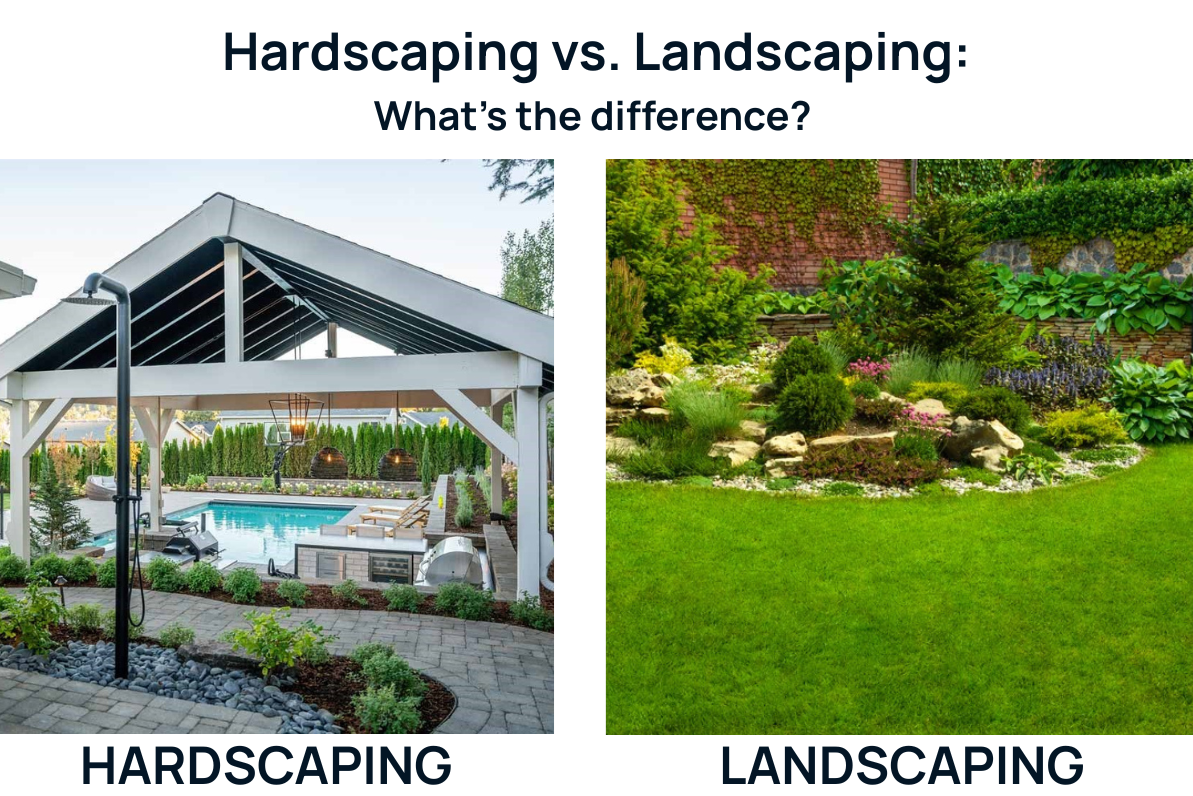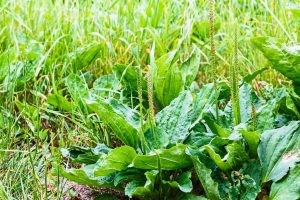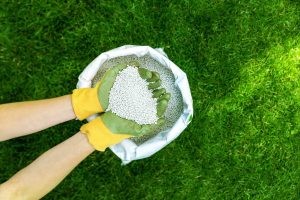Drip irrigation has become an increasingly popular method for watering landscapes and gardens, especially in regions like the Pacific Northwest where rainfall can be sporadic and summer droughts are becoming more common. In areas, like ours, that can see droughts as well as prolonged periods of rainfall, it is sometimes necessary to have an irrigation system that delivers precise amounts of water directly to only the areas that need it.
Let’s learn a bit more about when and where drip irrigation comes in handy in the Portland, OR and Vancouver, WA areas!
Drip Irrigation In Flower Beds & Along Borders

Flower beds and garden borders are often one of the first areas to benefit from drip irrigation systems. In areas of the Pacific Northwest, such as Oregon and Washington where many gardeners opt for native plants, perennials, and pollinator-friendly flowers, managing water distribution is key to promoting healthy root development without overwatering.
Drip irrigation reduces water evaporation by delivering moisture directly to the roots and limits weed growth, as water isn't spread across the entire bed. Flowers also benefit from drip irrigation preventing fungal diseases by avoiding overhead watering.
When to Use Drip Irrigation in Flower Beds:
- Spring through fall is the ideal time to install and maintain drip irrigation in flower beds.
- In dry summer months, especially in July and August when rain is less frequent, drip systems help prevent water stress in delicate blooms.
Where to Use Drip Irrigation in Flower Beds:
- For areas with drought-tolerant plants, such as Oregon grape or salal, drip irrigation helps balance water needs.
- In heavily mulched areas, drip systems allow water to seep directly to the soil beneath the mulch, improving water absorption.
Irrigation In Raised Vegetable Gardens

Raised vegetable beds are a staple in many Pacific Northwest gardens, particularly for growing cool-weather crops like kale, lettuce, and peas. Drip irrigation is a highly efficient solution for these areas, ensuring vegetables receive consistent moisture throughout their growing cycle, especially in periods of low rainfall.
This irrigation method saves time and reduces water use, as drip lines can be placed directly over plant roots, meaning the water does not have to travel as far through the soil to reach the roots. It can help maintain even soil moisture, critical for preventing issues like blossom-end rot in tomatoes. This method of watering is particularly effective in vegetable beds, where it’s important to avoid wetting the foliage, as doing so can promote diseases like powdery mildew, which is common in the region's humid climate.
When to Use Drip Irrigation in Raised Beds:
- Early spring and summer when vegetables need steady watering but rainfall may be inconsistent.
- During dry spells, drip systems provide deep watering that supports root development and higher yields.
Where to Use Drip Irrigation in Raised Vegetable Gardens:
- In tightly spaced rows, where watering overhead can lead to water waste.
- Around roots of crops such as tomatoes, beans, and squashes, where excess water on the leaves can promote diseases like powdery mildew.
Easy Watering For Trees & Shrubs In Your Yard

For homeowners with ornamental or fruit trees and large shrubs in their landscape, drip irrigation offers a way to provide deep watering without the waste associated with sprinklers. In the Oregon and Washington areas, where soil types can range from loamy to clay-heavy, drip systems ensure slow and consistent water absorption.
When to Use Drip Irrigation for Trees and Shrubs:
- During the first three to five years of a tree's establishment, when roots are still developing.
- In summer, when rain is less frequent, particularly for fruit-bearing trees like apple and cherry trees.
Where to Use Drip Irrigation in Landscapes:
- Around the drip line of trees (the area beneath the outer edges of the tree’s branches) to target the roots directly.
- Around large shrubs like rhododendrons, which thrive in the moist but well-drained soils of the Oregon area.
Irrigating Container Gardens & Patio Planters

Many homeowners in our area of the country enjoy container gardening, especially on decks, patios, and small spaces. Drip irrigation can easily be adapted to these settings, providing precise watering to individual containers without the hassle of hand watering.
When to Use Drip Irrigation in Containers:
- Throughout the growing season, particularly in summer, when container plants need frequent watering due to quick drying out.
- When using porous materials like terracotta pots, which dry out more quickly than plastic or glazed containers.
Where to Use Drip Irrigation in Container Gardens:
- In containers with vegetables, herbs, or annual flowers that require regular, deep watering.
- On patios or balconies, where hand-watering can be time-consuming or physically difficult.
Irrigating Sloped Or Difficult Terrain

One of the challenges for homeowners in the Pacific Northwest is managing water runoff on sloped landscapes or difficult terrain. Drip irrigation excels in these environments because it releases water slowly and at ground level, preventing the water from rushing downhill before it can soak into the soil.
When to Use Drip Irrigation on Slopes:
- During dry seasons when erosion control is a concern.
- In areas where heavy rainfall may compact the soil, reducing water penetration.
Where to Use Drip Irrigation on Sloped Terrain:
- Along hillsides or terraces, where traditional sprinklers may lead to runoff and wasted water.
- In rock gardens or areas with native ground covers, which benefit from slow, steady watering.
Conserving Water In Xeriscaped Yards

Xeriscaping is gaining popularity in all areas and climates, as homeowners seek to create low-maintenance, drought-tolerant landscapes. Drip irrigation is the perfect companion to xeriscaping because it provides water only where it’s needed, preventing waste and promoting water conservation.
When to Use Drip Irrigation in Xeriscaping:
- During the dry summer months, when drought-tolerant plants may still need occasional deep watering.
- As part of an overall water-saving strategy to reduce irrigation costs and support environmental sustainability.
Where to Use Drip Irrigation in Xeriscaped Gardens:
- Around drought-resistant plants like lavender, sedums, and grasses that thrive with minimal water but still benefit from occasional deep watering.
- In gravel beds or areas with mulch, where drip systems can ensure water reaches the roots without being lost to evaporation.
Simple Irrigation Installation For Portland, OR
Drip irrigation is an invaluable tool for homeowners and gardeners in the Pacific Northwest. However, irrigation systems must be installed properly in order to reap any of the benefits mentioned above. Installing drip irrigation at less-than-optimal locations could result in issues such as excess weed growth, fungal development, garden pests, and more. Call Simple Lawns for more information on the best irrigation practices, and be sure to ask us about our irrigation installation services for Oregon and Washington!
Subscribe to Simple Lawns's Blog








Comments